4) Graphene production - 100% owned
Saint Jean Carbon Inc. has a proprietary process for producing graphene. In layman's terms, harmonics are used to vibrate the graphite, and salt water to electrify the graphite and repel each of the layers apart creating a piece of graphite pulled apart into thousands of pieces down to one atom thick.
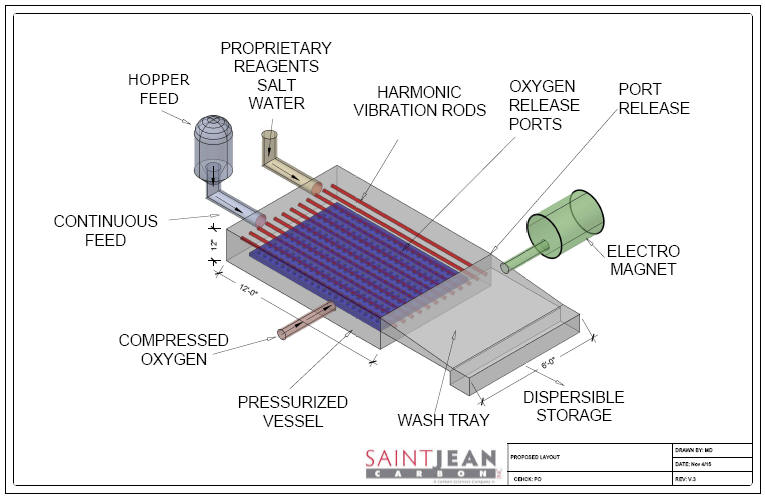
Fig. 6 (above) - Patent diagram for graphene production.
Related release
October 5, 2016 - Saint Jean Carbon Produce Single Layer Graphene[click to see full copy from source]
Excerpt:
OAKVILLE, ONTARIO--(Marketwired - Oct. 5, 2016) - Saint Jean Carbon Inc. ("Saint Jean" or the "Company") (TSX VENTURE:SJL), a carbon science company engaged in the exploration of natural graphite properties and related carbon products, is pleased to announce the Company has produced two samples of single layer graphene (1) dispersion 20 mL, 0.1%, with pure 100 mL water and (2) a 50 mg of powder. The material was produced without any chemicals or any mechanical systems that would harm the high order of carbon structure and wettability. The material has been sent to National Research Council (see press release dated July, 26, 2016) and will be used to help set the national standard for graphene production and quality.
Paul Ogilvie, CEO, commented: "We are very pleased to have both the material of such high quality and the know how to produce one atom thick graphene with zero impurities and be the most conductive and strongest material in the world. This milestone takes us another step forward as we continue to develop faster and more efficient systems to produce the material. More and more research into graphene in lithium-ion batteries continues to make real progress around the world, the better we understand the needs, the better prepared we will be in the future."
In simple terms, graphene, is a thin layer of pure carbon; it is a single, tightly packed layer of carbon atoms that are bonded together in a hexagonal honeycomb lattice. In more complex terms, it is an allotrope of carbon in the structure of a plane of sp2 bonded atoms with a molecule bond length of 0.142 nanometres. Layers of graphene stacked on top of each other form graphite, with an interplanar spacing of 0.335 nanometres.
Graphene is the thinnest compound known to man at one atom thick; the lightest material known (with 1 square meter coming in at around 0.77 milligrams); the strongest compound discovered (between 100-300 times stronger than steel and with a tensile stiffness of 150,000,000 psi); the best conductor of heat at room temperature (at (4.84±0.44) × 10^3 to (5.30±0.48) × 10^3 W·m−1·K−1) and also the best conductor of electricity known (studies have shown electron mobility at values of more than 15,000 cm2·V−1·s−1). Other notable properties of graphene are its unique levels of light absorption at pa ≈ 2.3% of white light, and its potential suitability for use in spin transport.
...click here for full copy from source |
5) First Superconductivity Room Temperature Wire - 100% owned
Saint Jean Carbon Inc. is the first in the world to create superconductivity at room temperature. The Company was featured on the cover of superconducting weekly for this achievement. The superconductivity is accomplished by a special way the graphene is created, in that it becomes diamagnetic, which means it repels a magnet. The energy in the middle of repelling magnets is superconductivity, it means there is zero resistance. That neutral zone in the middle is faster than the the speed of light and it is called superconductivity because anything can move through that space without resistance. In the current conventional world when you use an electrical cord on a tool the cord gets warm as electricity encounters resistance in the wire. SJL.V has created a wire three feet long that you can run tens of amps through, that is big power, and it does not even heat up, plus the energy moves along at light speed.
Related release
December 15, 2016 - Saint Jean Carbon and Western University Receive NSERC Grant
December 22, 2015 - Saint Jean Carbon Develops Room Temperature Superconducting Wire
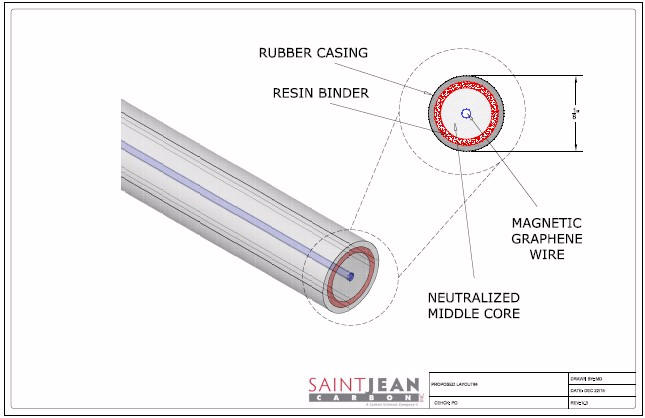
Fig. 7 (above) - Patent diagram for superconductive wire.
The Company was aware of inefficiencies in the Tesla car, in the electrical which takes up power. SJL.V theorized that if there were superconductive conducting wires between two points there would be no loss of power. In its consultation with Tesla it was confirmed there is a 15% loss of power as a result. So on the graphene side SJL.V went about creating and patenting a superconductivity wire. That wire is designed to replace the wire coming off of the electric motor that's coming off a battery, allowing energy to get to the motor super efficiently without any resistance and not using up energy along the path. The Company has published a peer review paper put out by the Company and Western University on magnetic resistance.
6) Diagmagnetic graphene - 100% owned
One of the interesting things about graphene is that it is always in motion, when you look at it under an atomic microscope it moves, it is trying to get back together again, if you leave it alone it will restack itself. Tens of billions in research dollars has been spent globally figuring out how to turn it off. A year ago SJL.V impressed the world announcing that it had created diamagnetic graphite, actually turning the graphite off. To change something ferromagnetic (attracted to a magnetic field) to diamagnetic (creating an opposing of the magnetic field) at some point you have to turn that off. SJL.V are the first in the world to actually switch on and switch off graphene, that becomes important because if you are going to try to say replace a silicon chip (which graphene would be marvelously suited to replace due to its conductivity) you need to be able to control graphene.
7) Diabetes Glucose Meter - 100% owned
Pouring salt water over graphene, or immersing graphene in salt water puts a charge on graphene, because saline creates electrical charges. Western University with SJL.V's help created a way of measuring glucose through saline in your tear duct. The detection using this method functions so accurately that it is possible to detect micro changes in the body's glucose chemistry and alarm the person. This has been patented and is awaiting commercial implementation, which has enormous potential.
8) Magnetoresistance Graphene - Co-owned
Magnetoresistance is the backbone of the technology that led to the recent creation of SJL.V's diabetes glucose meter patent (mentioned above).
September 21, 2016 - Saint Jean Carbon Successfully Creates Magnetoresistance Graphene
[click to see full copy from source]
Excerpt:
OAKVILLE, ONTARIO--(Marketwired - Sept. 21, 2016) - Saint Jean Carbon Inc. ("Saint Jean" or the "Company") (TSX VENTURE:SJL), a carbon science company engaged in the exploration of natural graphite properties and related carbon products, is pleased to announce the Company with the University of Western Ontario has created the first graphene that has magnetic field referred to as Magnetoresistance (MR). Creating this effect at an atomic scale is a tremendous step forward in the overall research and development of the Company's future in graphene products.
Jin Zhang Ph.D., Associate Professor, Department of Chemical and Biochemical Engineering at University of Western Ontario, commented: "Magnetoresistance (MR) refers to the significant change of electrical resistance of materials under a magnetic field. Magnetoresistance effects have been applied in magnetic sensors, spintronic devices and data storage. Magnetic sensors are extremely useful for today's industry for measurement and control purposes. The noncontact switching with magnetic sensors allow airplanes to fly with higher safety standards. Sensitive magnetic sensors allow automobiles to determine positions in several places such as the engine crankshaft and wheel braking. The miniaturized magnetic sensors used in magnetic data storage allow computers to have significant memory. Magnetic sensors can turn home appliances such as refrigerators and washing machines into smart devices. This happens by detecting changes in electrical resistance brought on by the presence of a magnetic field. This is also known as magnetoresistance (MR). The market size of the magnetic sensor is increasing with annual growth rate at 10% because of new nanomaterials. As part of the University of Western Ontario, we have being developing magnetic sensors by using graphene-based products with MR effects."
...click here for full copy from source |
------ ------ ------ ------ ------ ------
Graphite Mining Side of the Business
The management team at SJL.V has a very successful track record of advancing graphite projects to successful take-out (taking Northern Graphite from a few million market cap to ~near-$200 million (from 1/2 a penny in 2006 to over ~$3.75), taking Mega Graphite to ~near-$200 million, taking Canada Carbon to ~near-$30M). Christian Derosier, P.Geo., PhD. heads-up the expertise SJL.V relies upon in advancing a host of quality super high-grade and super high-purity lump graphite projects.
SJL.V's strategy is to use others graphite first, if possible, as graphite is basically a commodity and the real value in graphite for the Li-ion anode is in its technological process. Never the less, if SJL.V is going to produce 150,000 tonnes of spherical carbon coated graphite per year it has ensured it can meet 100% of the demand from its own strategic back-up holdings if need be. The company has formulated very sophisticated engineering models for its mining that have been fully vetted, it has plans to have up to 120 small pit (a small pit being just over 5 football fields in size). Multiple pits aid in ensuring consistency of product, and all of SJL.V's properties are in the same geographic area ensuring duplicating mining signatures and finished material DNA.
Graphite holdings in southwestern Quebec, Canada
The team at SJL.V has over a decade worth of time invested in vetting graphite properties all over the world. In Quebec SJL.V has the best graphite properties in the world, bar none. Also the properties are in the best geographical location in the world; Quebec is one of the safest and highest rated mining jurisdictions in the world with established mining processes and regulations. Quebec is ranked as a top tier location by the Fraser Institute Global Mining Survey. There are also Federal and Provincial tax incentives for exploration (the Quebec government reimburses 32% of exploration costs).
All of SJL.V's graphite properties are in or proximal the Buckingham area of Quebec, ~45 minutes drive from Montreal, and ~1/2 hour drive from Ottawa. The properties are also ~2 km from rail spurs.
Only about 30% of the known graphite mines/deposits out there globally have the quality of material to actually be able to produce spherical carbon coated graphite for lithium-ion batteries and that is for one simple reason; you can't use heat or harsh chemicals, or anything, that damages the high order of carbon when you purify it. You actually have to have material that comes out of the ground of high purity. If you look at SJL.V's press releases, its material comes out of the ground naturally at grades in excess of 70% and purity of 99.875% (which is the exact purity required for lithium-ion batteries).
All of Saint Jean Carbon's properties in Quebec have a lot of historical information that can be extrapolated. Also the Company is performing required steps to prove the quality out, testing various sections of the deposits/mines to make sure it can actually produce adequately. The consensus amongst professionals in the know about SJL.V's Quebec graphite holdings is that they don't suspect that the Company will have anything less than several millions of tonnes of quality material.
The best historical evidence that the Company's southwestern Quebec graphite properties are top notch lump graphite is that the historical mines all sold to an English firm called Morgan Crucible in the early 1900's. Morgan Crucible would grind out a block of graphite and pour in steel to make parts, if that graphite has any sulphur or iron in it the crucible would crack -- so SJL.V followed the mines Morgan Crucible bought from and all of SJL.V's S.W. Quebec historic mine properties were vendors to Morgan Crucible.
The Company already blends small batches from various graphite occurrences on different properties it possesses when it produces its own graphene or when it needs to send samples to prospective manufacturers. Even though the Company plans to use other peoples graphite, it knows it could probably strip mine its own veins in a pinch for two years. The Company can get permits to strip the veins within three months, basically going in with a backhoe and strip out the veins. No mill is needed, or anything, as it would be stripping out shear solid 99.9% graphite (large football size chunks). It could simply grind and float that material for a while until it organizes to tackle the voluminous quantities of 40% - 70% range material it could run with for decades. Graphite mining is simple, it is essentially a glorified gravel pit; you crush it, you grind it, you put it in a floater with reagent, and it floats to the surface, then you scoop it off.
From an environmental standpoint, SJL.V is modeling to mine multiple small pits engineered so as to not have any steep walls, and take on the natural gradation of the geography. Southwestern Quebec is mainly soft rolling hills and badlands, so the Company is engineering its pits in such a way that each and every one of them are self-reclamating. So when the Company starts mining a pit it will begin shaping it to take the natural shape on the earth so it does not have to fence them off, water runs naturally through, and forestation starts too. Additionally, once it does 120 pits the Company would be positioned to continue on and make an additional 120, easily extending supply for at least another decade.
Below is a summary of key holdings in southwestern Quebec:
Clot Lump Graphite Project
The Clot Graphite Project: The property is located, in Joly Township, about 150 km northwest of Montreal. At present it consists of five (5) claims which covers an area of about 297.35 hectares (ha) (735 acres); three (3) additional claims in demand which will be transferred to the Company as soon as the M.E.R.N.Q., has approved the attribution. The Clot graphite property has been the subject of a series of artisanal mining efforts since the early part of the 20th Century. Over the course of those efforts approximately 1,000 tonnes of lump graphite have been mined, processed and shipped to customers in Canada and the US. The geographic area within which Clot exists, has been the subject of a broad range of graphite developments. These include projects such as the Asbury Mine in Notre-Dame-du-Laus and the Lac-des-Iles Mine south of Mont-Laurier.
The claims are located in highly metamorphosed rocks which host a geological contact between a granitic intrusive and marbles and quartzites, two metasedimentary units of the Grenville geological Province. This represents a favorable geological context which is known to host graphite deposits. The Company therefore also believes the site will hold good potential for graphite mineralisation similar to historic mining operations that occurred in the area.
History on the Clot Property: The new Clot claims essentially surround an area that was known as the Clot Mine. Graphite production was known to have occurred at the Clot Mine between 1907 and 1919. Exploration, production and concentrate assays were undertaken in 1951 (Bourret, 1951) with about 800 tons of material extracted from the mine. Of that tonnage, 350 pounds were hand cleaned and concentrated to obtain a grade of 99.72% carbon. Also 14 tons of lumps contained 94.7% carbon. In addition more than 100 tons of the material at the operating site was estimated to over 35% graphite (Sigeom file GM01868). The remainder of the extracted material was under 20% graphite or unclassified. The deposit is reported to be at least 56m (185 feet) long and more than 3m (10 feet) in width (Bourret, 1952) - A qualified person has not done sufficient work to classify the historical estimate as current mineral resources or mineral reserves; and Saint Jean Carbon is not treating the historical estimate as current mineral resources or mineral reserves.
Land access to the new claims is provided by one public secondary all weather road, from highway 117. Accordingly, planned work programs can be done through the full year. Local resources are also available at the nearby cities of Labelle, located 3km along good road from the Property. Most of the property is on public land and water is abundant from lakes and rivers crossing the property in a north-south direction. Power, transportation and housing are available nearby and a local work force could support a mining operation.
All information pertaining to mineral resources herewith presented are historical in nature and while relevant, the information was obtained before the implementation of National Instrument 43-101 reporting standards. No historical estimate should be relied upon until it can be confirmed by the Company.
------ ------ ------ ------ ------ ------
St. Jovite Lump Graphite Project
The property is located 8.5 km south-south-east of the village of Brbeuf, in the Laurentian region, approximately 153 km northwest of Montreal. It is underlain by metasedimentary rocks of the Grenville Province which had been invaded by the igneous rocks of the Morin series. It includes the Brbeuf-SSE deposit which was mined sporadically for mica and apatite from 1954 to 1961.
It consists of a vein type deposit with most important pegmatitic vein measuring 30 m in length by 0.6 to 1.8 m in width.
The property is located some 4.5 km southeast of Brbeuf deposit, a graphitic occurrence located in marble and quartzite. Historical works on the Brbeuf deposit mention a graphite content of 33.82% from a graphitic band within the marble and a flaky and lump type mineralisation. This deposit is found at the contact zone between the Grenville and a granitic intrusive mass, where a wide zone of alteration was developed with secondary minerals derived from the sediments, such as wollastonite, scapolite and diopside.
Outcrops of pegmatites, syenogranites and leucogabbros were noted on a preliminary site visit on the Property. The presence of granitic and pegmatitic rock units warrant further investigation to find marbles or graphite-mineralised skarns.
All information pertaining to mineral resources herewith presented are historical in nature and while relevant, the information was obtained before the implementation of National Instrument 43-101 reporting standards. No historical estimate should be relied upon until it can be confirmed by the Company.
------ ------ ------ ------ ------ ------
Bell Lump Graphite Mine
The property is made of 13 claims (CDC) for a total area of 781 ha. It is located on Buckingham and Lochaber Townships in southwestern Qubec, about 170 km west of Montral. Limitation to exploration included the permission from land owner and a gold-silver restriction over a rectangular area, 1.25 square kilometre, surrounding the former Bell Mines in the north central part of the Property.
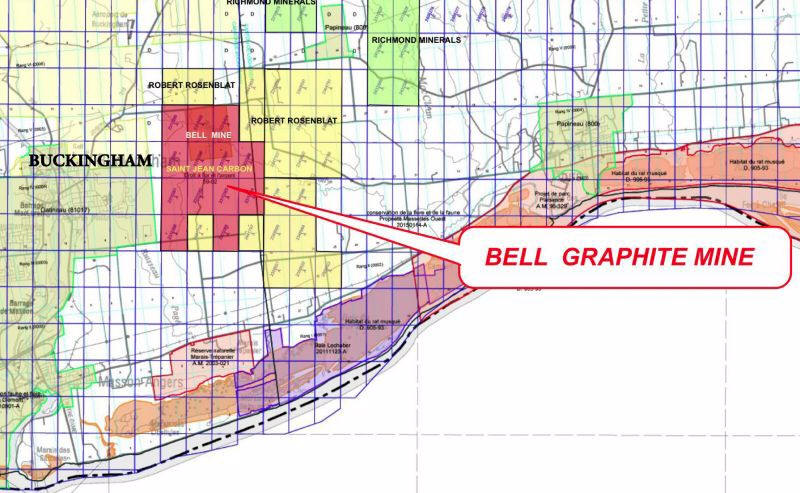
Figure 9. (above) - Location Map.
Related news releases
July 11, 2016 - Helicopter-Borne Magnetic and Time-Domain Electromagnetic Surveys on the Bell Graphite Mine[click to view full release]
Excerpts:
October 20, 2016, Oakville, Ontario, Canada Final airborne results of the summer work program and will use the comprehensive data for the fall work program now underway. That includes three bulk samples, beep mapping and drilling.
On the Bell Block of claims, two main corridors of more or less N-S oriented conductive lineaments are found and have been identified as prospective areas. The first area in the central part, hosts the past producing New Quebec Graphite Co mine while the past producing Bell Graphite mine stands in the second area. This prospective band runs parallel to the rock formation and is extending N-S over a distance of about 2 km in the eastern part of the property. This prospective band has never been drill tested and therefore represents a priority target. 2 The southern half of this area is particularly interesting as it hosts the strongest and most continuous EM conductors believed to be found in the bedrock, and should therefore be investigated in priority. The northern part of area is ambiguous and it is difficult to confirm if the sources are part of the bedrock or not. This part corresponds to flat clayish lands with farming.
...click to view full copy from source |
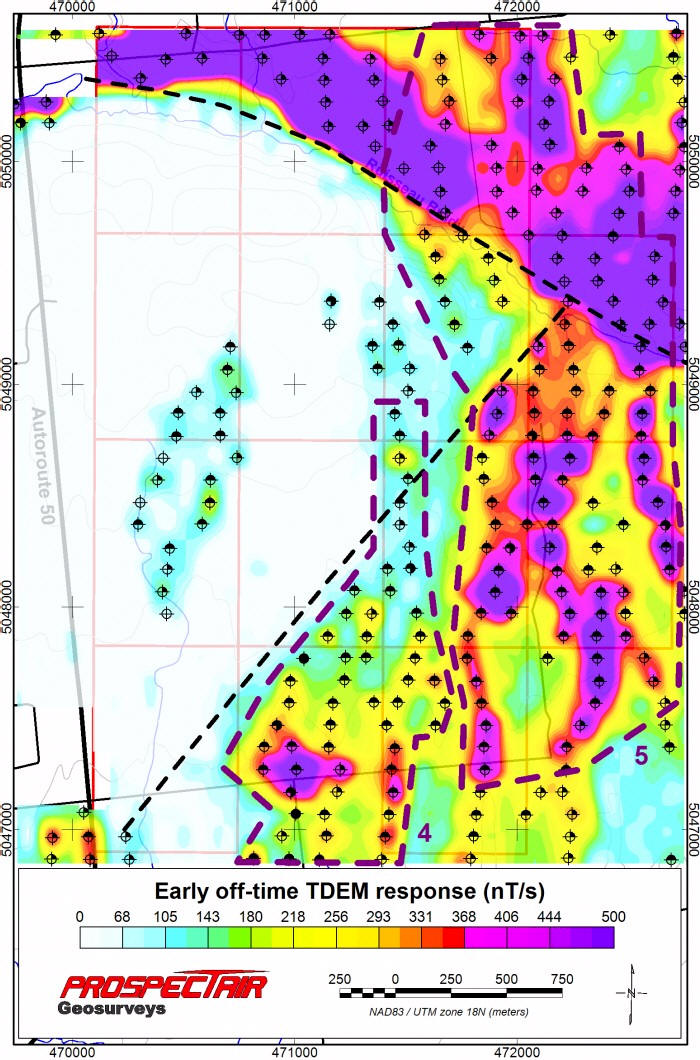
Figure 10. (above) - Transient electromagnetics.
Additional related news:
October 12, 2016 - Saint Jean Carbon Returns Excellent Results from the Summer Work Project
Excerpts:
October 12, 2016, Oakville, Ontario, Canada – Grab samples were taken at different locations and sent to the ALS’s laboratory in Val d’Or, Quebec to test the organic carbon content as well as 37 other chemical elements.
New Quebec Graphite Mine: This mine was in production from 1912 to 1918. It produced about 2,500 tonnes of graphite that was mainly used as a lubricant. The mica was sold and used as filler in the electric industry (capacitors, etc.). The graphitic layers are found in calcareous gneiss as flakes and sometimes as lump. The graphitic layers measure 2.7 m maximum. During the QP’s visits, remnants of the ancient buildings and trenches were recorded with GPS.
The first sample was a composite of grab samples taken from a pile of mineralized rocks found and recorded close to trench No. 1. Assay results are as follows:
M742351: orgC.: 10.85%-Flakes are 1-3 mm wide. The sample shows anomalous dolomitic values (CaO+ MgO). The second sample is from the ruins of the mill, close to the pipe that was used to bring the slurry to the nearby tailing pond.
M742352: orgC.: 16.60%-Graphite is highly pulverized and appears as dust. The sample also returned anomalous values of copper (173 ppm), barium (720 ppm), tin, Strontium, Phosphorus, lead (642 ppm), and zinc (1440 ppm).
M742353: orgC.: 5.16%-This sample was taken in trench No. 2 found in the south part of the New Quebec mine area. The mineralized rock is a paragneiss poor in carbonate. Flakes are disseminated and measure 1-2 mm in diameter.
Around the old concrete slabs and walls, the pits and trenches excavated from 1912 to 1919 are found within an area of 300m in length by 200 m in width. The mineralized rocks are trending NNE and dip sub vertical. The extension at depth of the graphite mineralization is not known. The old mine has never been drill tested.
The Bell Graphite Mine: This mine is located at about 1.9 km NNE of the New Quebec Graphite mine. Historically, the Bell Mine produced about 6,700 tonnes of graphite between 1906 and 1912. Exploration drilling was performed in the early 1950s, which defined the downward extension of Bell Mine graphite deposit.
M742360: orgC.: 6.81 % -This composite sample was taken on the top of an elongated pile of rocks located near the foundations of the old mill. This pile appears to have been built by ore cars on narrow gauge track. Flakes observed are 1- 2 mm in size. 2
M742361: orgC.: 4.75%-A second composite sample was taken from a pile close in proximity of Pit No. 2. This small pit is located at about 15 m east of the long and main excavation. The mineralized rock is a calcareous paragneiss stratigraphically lying below the main mineralized zone. Graphite flakes are 1-2 mm in size.
M742362: orgC.: 8.93%-This composite grab sample was taken from Pit No. 3, part of the main exploitation. Sulphides are present. Flakes are 1-3 mm wide. This sample is anomalous in strontium and zinc. |
History on the Bell Mine
Historically, the Bell Mine produces about 6700 tons of graphite between 1906 and 1912 while the New Qubec Mine produce 2500 tons of graphite from 1912 to 1920. Exploration drilling was performed in the early fifties which define the downward extension of Bell Mine graphite deposit.
The property is found in the Central Metasedimentary Belt (CMB) of the Grenville geological Province, with regional metamorphism reaching upper amphibolite grade and granulite facies locally. The Buckingham Property is mostly is mostly underlain by different types of paragneisses intermixed with large bands and lenses of marbles and quartzites with SW-NE to NS orientation.
Known graphite mineralisation consist of multiple narrow bands trending NNE (020°). At the Bell Mine Pit, these bands occur in paragneiss in association with disseminated pyrite. They were found within a working thickness from 1 to 5 m and have been follow over a strike length of 660 m and its extension at depth has been demonstrate by drilling in 1950. At the New Quebec smaller mine pits, the graphite is associated with a grey calcite-biotite gneiss, devoid of sulfides. One of the pit follow a one meter thick highly schistose zone enriched with flaky graphite over a 10 m strike length and is well exposed at its northern end.
Graphite enrichment within highly schistose bands may imply migration and recrystallisation as large flakes in shear zones which may have enhanced both continuity and quality of the mineralisation. EM geophysics is well suited to better define such mineralisation. Exploration included two phase of works during the summer of 2013 and the spring of 2015. Remnants of graphite rich bands (47 samples) from historical mine pits were submitted to ALS Chemex Laboratory in Val-d’Or which returned concentration from traces to 22% organic carbon.
The historical drilling by Frobisher Ltd in early fifties defines the extension at depth of the Bell Mine Graphite Deposit and results in a pre-43-101 estimation of 185 100 tons at 9.4 % graphite which constitute an exploration targets by today’s standard. Although this graphite occurrence show the high potential of the property it may not be the best targets on the property because of the presence of pyrite and its higher depth. Instead, the lateral extension of the graphite rich schistose zone should be investigate by geophysics and trenching, which may reveals shallow occurrence of high quality graphite.
Bell Graphite Co Mine (1906-1912)
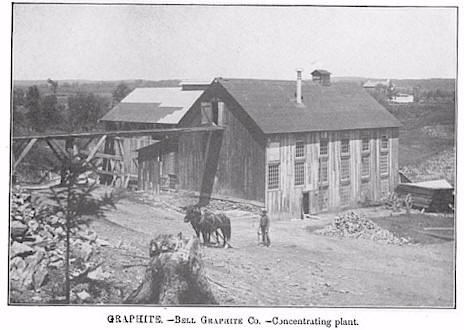
Figure 11. (above) - Historic Bell Graphite Co. Mine.
The Bell Graphite Mine was operated from 1906 to 1912 during which 6700 tons of graphite were produced. Graphite was found in a bed of disseminated flake on lot 2W ½ of range V. The graphite ore was distributed in a lenses 600 m in length and 3 to 4 m wide. In 1910, a mill, which consisted of a large, 3-storey wooden structure was erected.
All information pertaining to mineral resources herewith presented are historical in nature and while relevant, the information was obtained before the implementation of National Instrument 43-101 reporting standards. No historical estimate should be relied upon until it can be confirmed by the Company.
------ ------ ------ ------ ------ ------
Walker Graphite Mine
The Walker Mine is a past graphite producer with about 816 tons of lump graphite extracted from the mine between 1876 and 1920. The property consists of 4 claims covering the past mine and 11 claims covering interesting geological context for more graphite mineralization in the region around the deposit.
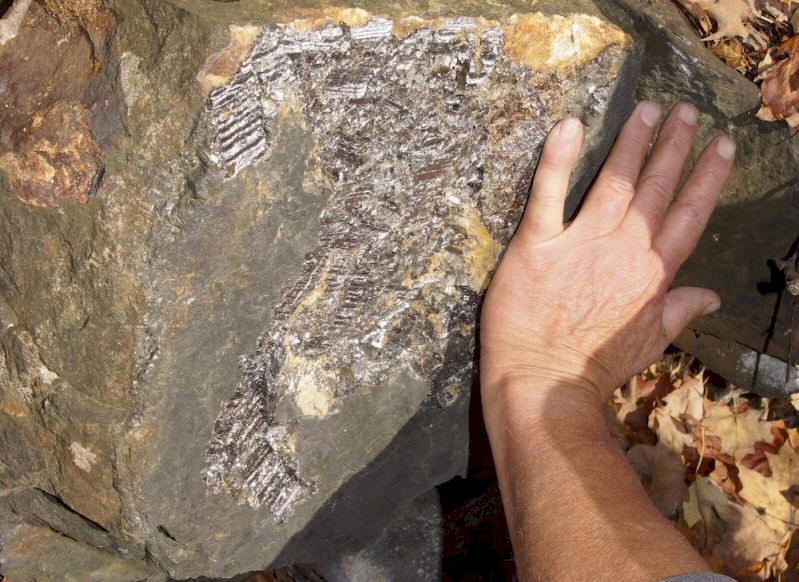
Figure 12. (above) - Walker Project 22 inches wide ore -high density grade 89% Cg- Image from October 8th , 2013 site visit.
No mining restrictions exist over those claims. The property covers 9.02 square km of land and is located 40 km north-east of Ottawa. Main roads are located 2 km away from the Walker Mine. A secondary or private road runs up to the property site which allows for easy access. The regional claims are also easily accessible via a main road.
Most Recent Results
October 20, 2016 - Saint Jean Carbon Receives Final Airborne Report
Excerpt:
Saint Jean Carbon Receives Final Airborne Report October 20, 2016, Oakville, Ontario, Canada- The Company has received the final airborne results of the summer work program and will use the comprehensive data for the fall work program now underway. That includes three bulk samples, beep mapping and drilling.
On the Walker block of claims, three prospective areas have been defined. The first one is extending NE-SW over about one kilometre in the eastern part of the property. This area has been shown to contain several previously mined high-grade graphite veins. The second prospective zone corresponds to the location of the past producing Walker mine. Recent sampling made in part of this area by Saint-Jean Carbon, showed the extension to the SW of the graphite mineralization.
The prospective area #3 consists in a wide corridor of N-S trending conductors usually sub-parallel to the magnetic grain, indicating that sources of interest may be present. However, this area is also mostly found in flat lowlands, where the background TDEM response is rather high, suggesting that conductive overburden is contributing to the response. Therefore, it is not clear if the conductive lineaments are rather related to bedrock conductors or to local thickening of Leda clay deposits. In fact, effects from both types of conductors may very well be present. As a consequence, it is recommended to perform a ground reconnaissance of the conductive area in search for outcrops that could help confirming the sources of anomalies.
...click here for full copy from source |
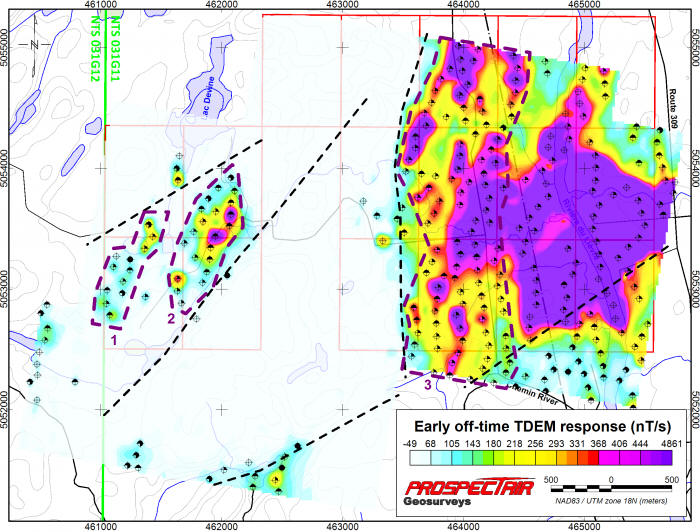
Figure 13. (above) - Walker Graphite Property Transient electromagnetics.
Additional related news:
October 12, 2016 - Saint Jean Carbon Returns Excellent Results from the Summer Work Project
Excerpt:
Walker Graphite Mine: The Walker graphite mine area is the subject of road construction giving access to some lakes that may be developed for residential housing and camping. At about 250 m west of the old Walker mine, an outcrop has recently been stripped and blasted and does not show the presence of flake graphite mineralization associated to some sulphides (pyrite, pyrrhotite).
M742357: orgC.: 9.83%-This mineralized layers is about 1 m thick and dips at 20-30° to the west. Flakes are disseminated and measure 1-2 mm. The paragneiss is low in carbonate.
M742358: orgC.: 0.63%-This grab sample was taken on an outcrop stripped by a bulldozer and showing the presence of sulphides. No graphite was observed. Pyrite, pyrrhotite and rare chalcopyrite were observed (Cu: 135 ppm).
M742359: orgC.: 15.50%-This composite sample was taken on an old stockpile found at about 30 m south of the old pit. Graphite flakes are disseminated and measure 2-3 mm. The developer will fill this area with large blocks of rocks removed during the road construction. |
Related News:
Saint Jean Carbon announced the results of two test programs on its lump graphite from the Company's Walker Graphite property in Quebec.
Excerpts Octo. 15, 2013:
The combination of higher reagent concentration and longer retention times in the fifth test provided the 99.1%Cg best result. This positions the Company's graphite as being fully suited for a wide range of high purity applications.
The fifth test provided the 99.1%Cg best result with he combination of higher reagent concentration and longer retention times
The test work was carried out at Process Research Ortech in Mississauga, Ontario and lab analysis was done at Activation Laboratories Inc. (Actlabs) in Ancaster, Ontario. The goal of the tests was to assess the potential of the Walker lump graphite to be upgraded to 95-99%Cg, which is considered to be commercially marketable levels. The first program consisted of a series of grinding and flotation stages, as well as a caustic leaching process. Material used in the testing was assembled during the Company's sampling program announced in July, 2013 which outlined naturally occurring in situ grades of 89.5%Cg. As the table in our Oct 15th press release indicates, the upgrade process was successful in increasing this to a preliminary upgrade of 97.3%Cg. This is generally considered to be suitable for a wide range of product applications in the graphite sector. Sample material was also weighed before and after testing to assess yield recoveries. As the table also indicates the tests were successful in producing very favourable yields which will be important in maintaining a low cost base when mineral processing the Walker graphite.
Following this initial test phase, the same material was then subjected to three different variations on the caustic leaching process. In the first test, the leaching retention time was increased from four to six hours. In the second, the caustic concentration was increased to 50% and retention time was again six hours. And in the third, the material was subjected to a regrind stage that decreased particle sizes from 47 microns down to 20 microns. Reagent concentration and retention time was 50% and six hours respectively in the third test as well. As the table below indicates, test results also provided by ActLabs indicate that the Company was successful in increasing the grade up to 99%Cg+ in both the fourth and fifth variations of the simple and cost-effective leaching process. The combination of higher reagent concentration and longer retention times in the fifth test provided the 99.1%Cg best result. As noted above, this positions the Company's graphite as being fully suited for a wide range of high purity applications.
These positive test results are also consistent with the Company's belief that the Walker Graphite property contains economically upgradeable deposits of lump graphite and should therefore be the focus of a full geologic development program in the months ahead. This program commenced in early October with a preliminary beep mapping survey to examine for conductors, and will be followed by an airborne EM survey shortly thereafter. Results from both of these next stages will form the basis for an initial historical NI 43-101 report on Walker, and the Wallingford and St. Jovite properties, also in Quebec, which the Company previously announced that it had entered into a non-arm's length non-binding agreement to acquire. Upon completion of the preliminary report, the Company will develop and define a comprehensive drill program to properly quantify the size and extent of its lump graphite deposits. The drill results and expanded NI 43-101 will be used to prepare a pre and/or full feasibility study as part of the definitive effort to bring the properties into production as soon as possible. The low-cost production opportunity provided by lump graphite will permit the development of an optimized flow sheet that should similarly result in low capital expenditure requirement to process the lump graphite. Mr. Ogilvie noted “the direct results of a low-cost recovery operation and capital budget are one of the principal guiding reasons for our focus on lump graphite, be it in Quebec or Sri Lanka. On that basis we will be making every conceivable effort to move forward rapidly with our plans to establish economically successful production facilities in both locations”. |
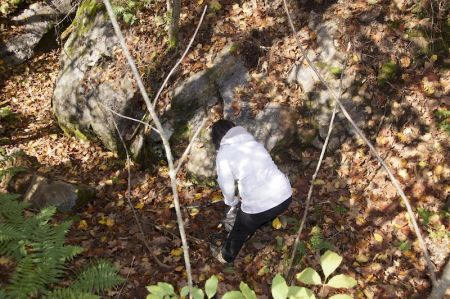
Fig. 14. Walker Project (Image above) - Exposed vein running Southeast approx 20 feet
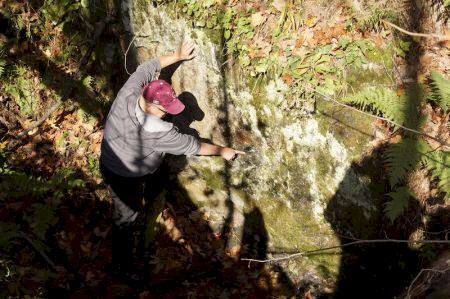
Fig. 15. Walker Project (Image above) - Exposed vein on pit wall
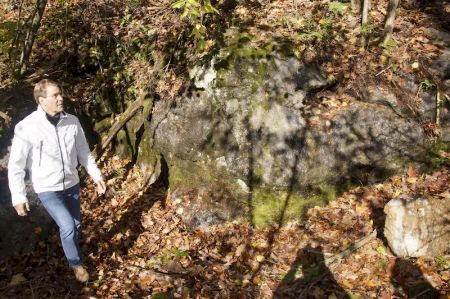
Fig. 16. Walker Project (Image above) - Aprox 22 feet of exposed historical vein
In a previous site visit the Company’s geologist, Ms. Isabelle Robillard, P. Geo., collected initial composite grab samples
The team directly assessed the visible graphite veins and extracted samples taken along the various veins. The purpose of the program was to assess the potential for high grades encountered across this mineralization region.
"The laboratory returned the graphite assay value (89.5% Cg) that is reported here. One of the veins was followed at surface for at least 6 meters along strike and many small mine pits and trenches were found in the immediate area, indicating the presence of more graphite mineralization.”
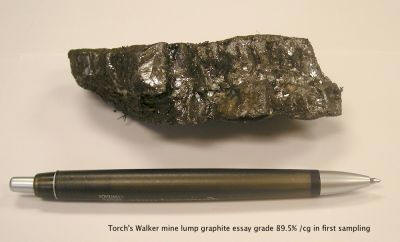
Fig. 17. (above) - Walker Graphite |
Based on subsequent analysis conducted by Activation Laboratories Ltd. (Actlabs) of Ancaster, Ontario using the IR process (Leco), the results confirmed the presence of a high quality lump/vein graphite mineralization. Ms. Robillard commented on the results as follows: “Graphite occurrence was observed during recent fieldwork (2013-06-21) from an ancient shallow exploitation pit on an easily accessible part of the property. The old pit and adjacent waste rocks pile exposed at least two sets of intersecting graphite veins, with thickness ranging from 2 to 10 cm. Vein material was sampled and sent to Actlabs in Ancaster.
The mine which operated from 1890 through to 1920 is located in the Central Metasedimentary Belt of the Grenville geological province, between Montreal and Ottawa. The potential for high quality graphite deposits in this area has been actively examined and reported on for many years and the Company is looking forward to commencing work on the property as soon as possible.
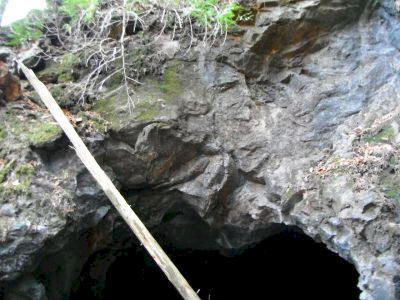
Fig. 18. (above) - Walker Graphite |
A review of the historical records related to Walker provides extremely encouraging comments on its lump graphite potential. One of the most detailed accounts of graphite in this region was a comprehensive book prepared and published for the Canadian Department of Mines in 1907 entitled, “Graphite: Its Properties, Occurrence, Refining and Uses by Fritz Cirkel, M.E. (Mining Engineer)”. In a section devoted to a review of the Walker Mine, Mr. Cirkel provided the following commentary: “The vein filling consists of graphite in by far the larger number of cases; it then is composed of parallel fibers or columnar aggregates, the fibers being vertical to the walls of the vein, as is very common in a number of localities in Ceylon (Sri Lanka) for example. In several cases green apatite and scapolite occur with the graphite. The occurrence of apatite appears to be not uncommon and reminds one of the occurrences of the same mineral in the graphite veins of Ceylon.” These observations are consistent with the Company's own research on Walker and a number of properties located in the same region. |
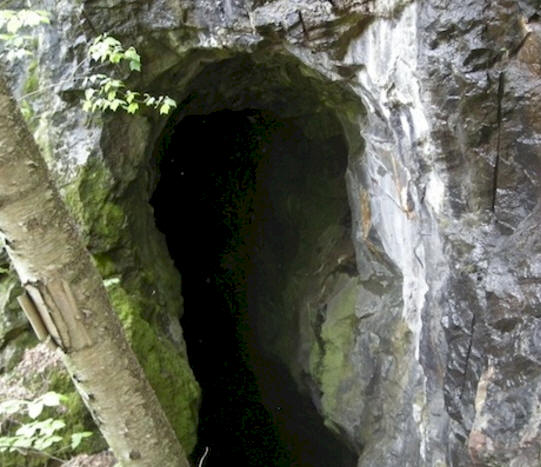
Fig. 19. (above) - Walker Graphite
Mineralization
The mineralization at Walker Mine consists of about 25% graphite along with contact metamorphism minerals (Apatite, scapolite, pyroxens, pyrite, titanite, micas and tourmaline). The graphite is present in irregular veins associated with pegmatite and crystaline marble. The graphite appears to correspond to 25% of the mineralized zone, and consist of disseminated flake of unknown size and quality.
There is more than 30 pits reported on the past producing property, which consisted of lots 19 to 21 in ranges 7, 8 and 9. It is to be noted that the current property doesn't include range 9 and part of 8: however the many pits reported should mostly be in the current property (where the Walker Mine was) and these indicate that the mineralization could have an important volume and more extensions on the property.
All information pertaining to mineral resources herewith presented are historical in nature and while relevant, the information was obtained before the implementation of National Instrument 43-101 reporting standards. No historical estimate should be relied upon until it can be confirmed by the Company.
------ ------ ------ ------ ------ ------
East Millar Graphite Property
East Millar is interesting in that it is contiguous with Canada Carbon's property and with the occurrences of graphite.
Bonus/aside: Besides high-grade high-purity lump graphite, the East Millar property hosts fine marble similar to what is found on Canada Carbon's property. The marble is of such high quality that Canada Carbon has an offtake agreement with local marble cutters that nets a royalty. SJL.V does not have to do anything other than simply give local marble cutters right to the claims and the Company will receive a royalty. SLJ.V has potential on the marble end to yield what Canada Carbon has; SLJ.V has potential for a ~$13M to $15M haul-off of granite netting ~$1.5M in royalties.
------ ------ ------ ------ ------ ------
Graphite Holdings in Sri Lanka
Saint Jean Carbon Inc. entered into a deal to buy robust graphite mine leases and licenses. The Company has rights to claims however the property should be viewed as a long-term strategic back-up.
Sri Lanka is the only region in the world that produces vein (lump) graphite.
------ ------- ------ ------ ------ ------
SJL.V's relationship with Graphena
Graphena is a Spanish firm that makes synthetic graphene. Saint Jean Carbon Inc. is a North American distributor for Graphena, Canada's exclusive distributor for them. The only reason SJL.V took the distributorship, besides the fact they were asked to, is that it opened up doors all over North America at top universities and other entities interested in buying supplies of synthetic graphene. Graphena makes graphene via chemical vapor disposition, similarly to how diamonds are made. SJL.V has sold material to MIT and other entities, however the main benefit for SJL.V representing this product is that it assisted the Company to become familiar with who was doing what kind of projects and it formed an excellent marketing gateway as it allowed SJL.V to talk to top level researchers and professors in North America about what SJL.V were doing with its own natural graphene and how the Company is able to produce.
------ ------- ------ ------ ------ ------
|
Saint Jean Carbon Inc.'s Technical Leadership, Management, and Governance Skip to top
SJL.V's board of directors and management team has a well rounded combination of people that each contribute expertise in disciplines necessary for a successful organization:
Paul A. Ogilvie, CEO & Chairman, Director
Mr. Ogilvie brings a wealth of knowledge to the graphite sector. Mr. Ogilvie has been extensively involved in several start-ups, including emerging graphite companies, for over 33 years. He most recently served as Chief Executive Officer and Director for both Mega Graphite Inc. and Canada Carbon. Prior to this, in 2007 Mr. Ogilvie led a private investment group in the redevelopment and turnaround of Industrial Minerals Inc. (now known as Northern Graphite Corporation (NGC-TSX.V), a junior mining company that is presently developing one of the largest large-flake natural graphite deposits in the world. Mr. Ogilvie has direct experience in the development of technologies related to the production of graphite ores and the operation of global graphite markets for base and high purity graphite products.
Dr. Zhongwei Chen PhD, MSChE, BSr, Chief Technology Officer
Dr. Zhongwei Chen PhD, MSChE, BS, Canadian Research Chair and Professor in Advanced Materials for Clean Energy Waterloo Institute for Nanotechnology Department of Chemical Engineering, University of Waterloo. Dr. Zhongwei Chen will lead the technology planning, engineering and implementation of all of the Company's clean energy storage and energy creation initiatives. Dr. Zhongwei Chen's research work covers advanced materials and electrodes for PEM fuel cells, lithium ion batteries and zinc-air batteries. His education; PhD, University of California - Riverside, MSChE, East China University of Science and Technology, China, BS, Nanjing University of Technology, China. His honours and awards; Early Researcher Award, Ministry of Economic Development and Innovation, Ontario, Canada (2012), NSERC Discovery Accelerator Award (2014), Canada Research Chair in Advanced Materials for Clean Energy (2014), and E.W.R Steacie Memorial Fellowship (2016).
Dr. William E. Pfaffenberger, President and Director
Dr. Pfaffenberger is President of Saint Jean Carbon (formerly Torch River Resources) having joined the company in April 2006. He is a retired professor of mathematics who was in the Mathematics and Statistics Department at the University of Victoria for 38 years. Dr. Pfaffenberger served as a Member of the Board of Governors and Chair of his department and served as Chair of the Board of Pension Trustees for 11 years overseeing a fund of over $400 million. Dr. Pfaffenberger currently serves as a Director Cancana Resources (TSX-V:CNY) and as President of a private minerals company, Fundamental Resources Corp.
Donald G. Snyder, Director & Chairman of the Audit Committee
Mr. Snyder has held the position of Chairman and Director of Saint Jean Carbon (formerly Torch River Resources) since it’s inception. He was a Director of Teal Capital Inc. a predecessor to Torch, since 2003. Mr. Snyder was a founder and partner in Brymore Energy Ltd., which was an energy marketer from 1986 to 1997. Brymore bought, transported and sold natural gas, crude oil and sulfur to customer throughout Canada and the United States. Mr. Snyder served in many positions including as Vice President to Northridge Petroleum Marketing Inc., and Consolidated Natural Gas Ltd. from 1981 to 1986, Nova Corporation of Alberta and Manager Pipeline Engineering, 1976 to 1981 and previous public company Directorships:BXL Energy Ltd, Military International Ltd. and Tael Capital Inc. Education:BSc. Civil Engineering, 1961, University of Alberta. Certificate, Business Admin., 1970, University of Saskatchewan, Regina. Affiliations: Association of Professional Engineers, Geologists and Geophysicists of Alberta.
Dr. David W. Madill, M.D, Director
Dr. Madill 30 years experience in the mining industry, particularly in its financing and development. Mr. Madill also serves as director of Cancana Resources Corp. As well, he is a director, and Chairman of the board of the successful, privately owned mining investment company, Fundamental Resources Corp. He has an M.D. degree from Queen's University, Kingston, Ontario.
Dr. Don MacIntyre, Ph.D. Eng., Director
Dr. MacIntrye has been a registered Professional Engineer with the BC Association of Professional Engineers and Geoscientists since 1979. He was with the Geological Survey Branch of the B.C. Ministry of Energy and Mines as a project geologist. Over a 25 year career with GSB, Dr. MacIntrye was responsible for a number of geological mapping and mineral deposit projects mostly in northern British Columbia. Areas included the Gataga SEDEX district of the Northern Rockies, the Tatshenshini district of the St. Elias Range and the Tahtsa Lake, Smithers and Babine Lake districts of Central BC. These projects focused on defining the geologic setting and genetic controls associated with a diverse range of mineral deposit types including porphyry Cu-Mo, SEDEX, VMS, polymetallic veins and epithermal Au-Ag. Dr. MacIntyre also helped develop the GSB's digital mapping systems, especially those dealing with regional mapping and mineral potential evaluations. In 2004 he took early retirement from the GSB and started his own geological consulting company.
Mr. David Da Rin, Director
Mr. Da Rin is the President of Schunk Graphite Technology, LLC and Schunk of North America, Inc. He serves on the boards for all the US companies of the Schunk Group. He has 40 years of extensive business experience, beginning in the design and manufacture of hi-tech aerospace flight training equipment to most recently the manufacture and sale of carbon products. He has led the turnaround of unprofitable companies while growing the top line. Additionally, he has led merger and acquisition teams which expanded product portfolios into new markets. Mr. Da Rin has a MBA in Finance and an undergraduate degree in Accounting/Finance.
Most recent Company press releases:
Note: This list is not intended to be a complete overview of Saint Jean Carbon Inc. or a complete listing of its projects. Technology MarketWatch urges the reader to contact the subject company and has identified the following sources for information:
For more information contact Saint Jean Carbon Inc.'s head office at: Ph (905).844.1200
Company's web site: www.saintjeancarbon.comSEDAR Filings: URL |